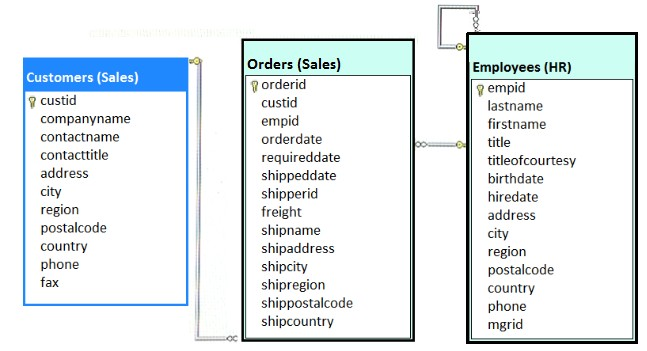

Note: This question is part of a series of questions that present the same scenario. Each question in the series contains a unique solution that might meet the stated goals. Some question sets might have more than one correct solution, while others might not have a correct solution.
After you answer a question in this section. You will NOT be able to return to it. As a result, these questions will not appear in the review screen.
You have a database that includes the tables shown in the exhibit (Click the Exhibit button.)
You need to create a Transact-SQL query that returns the following information:
✑ the customer number
✑ the customer contact name
✑ the date the order was placed, with a name of DateofOrder
✑ a column named Salesperson, formatted with the employee first name, a space, and the employee last name
✑ orders for customers where the employee identifier equals 4
The output must be sorted by order date, with the newest orders first.
The solution must return only the most recent order for each customer.
Solution: You run the following Transact-SQL statement:
Does the solution meet the goal?
masonsam
4 years, 5 months agogeekeek1
4 years, 5 months agoVermonster
4 years, 6 months agoAndy7622
4 years, 6 months agoLuzix
4 years, 7 months agoNhiN
4 years, 7 months agoJangstar
4 years, 9 months agoJangstar
4 years, 9 months agoKiruu23
4 years, 10 months agoNhiN
4 years, 7 months agoAndy7622
4 years, 6 months agostm22
4 years, 11 months agoMML
5 years, 1 month agoMosufe
4 years, 10 months ago